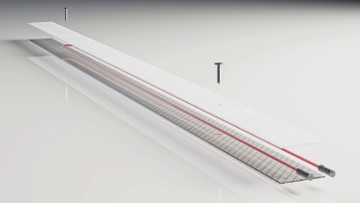
NSHT is a distributed strain transducer consisting of a coupled system composed of an optical fiber strain sensor and a fiber-reinforced composite material that forms its resistance support and connection apparatus with the structures to be monitored and reinforced, for structural and geotechnical applications. The proposed transducer, removing many implicit limitations of conventional monitoring systems, is essential to develop innovative Early Warning (EWS) systems for geotechnical applications and “Structural Health Monitoring and Restoration” (SHMR)improvement of simple “Structural Health Monitoring” (SHM).















